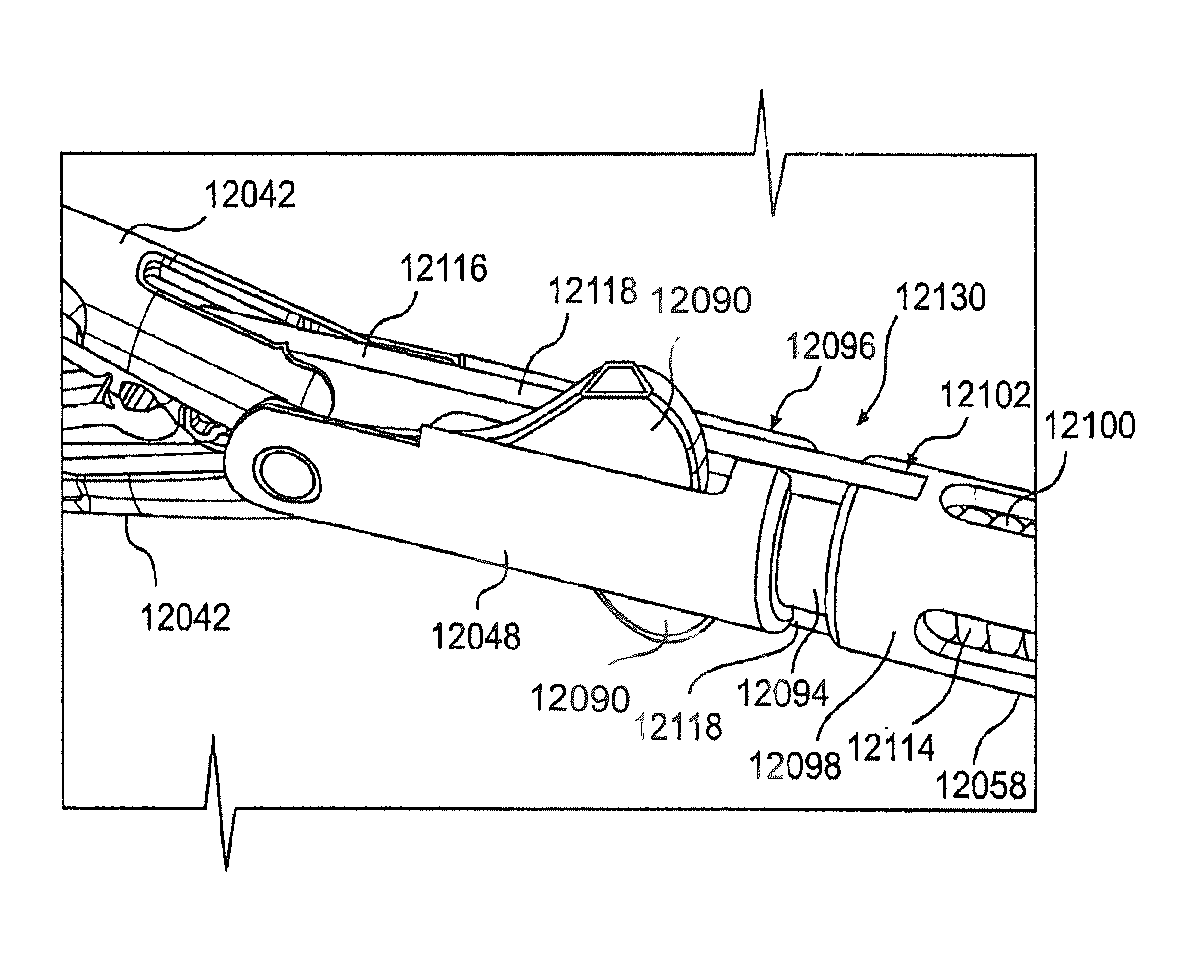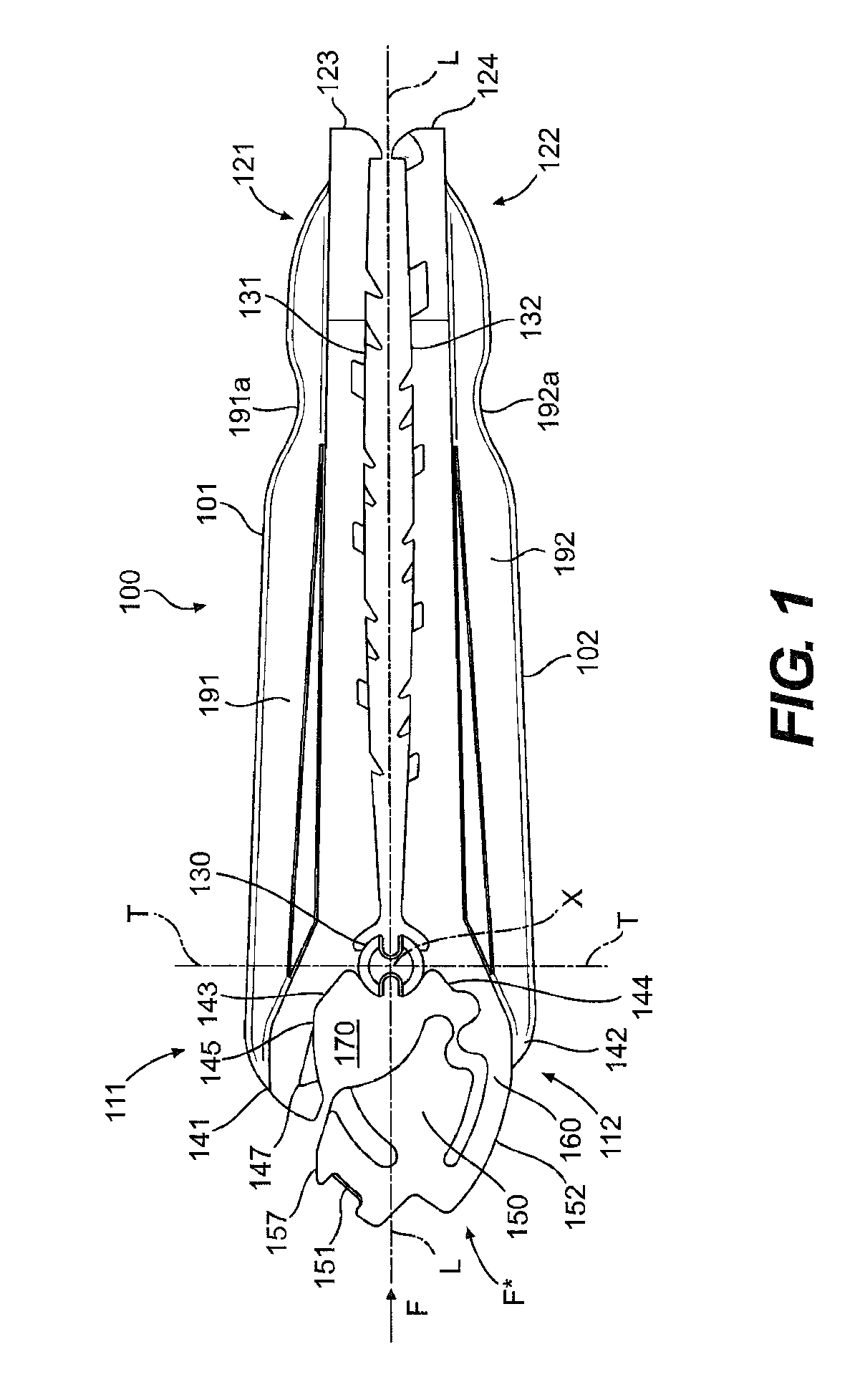Manual surgical ligation clip applier
a clip applier and manual technology, applied in the field of medical devices, can solve the problems of limited space and visibility, time-consuming and difficult to perform complex manipulations, and the use of surgical threads for ligation, so as to maintain the clamping pressure on the vessel and effective clip delivery
- Summary
- Abstract
- Description
- Claims
- Application Information
AI Technical Summary
Benefits of technology
Problems solved by technology
Method used
Image
Examples
first embodiment
[0148]FIG. 1 shows a view of a surgical ligation clip 100 in accordance with present invention. The clip 100 defines a longitudinal axis “L” along its longest dimension and includes a first leg 101 and a second leg 102 each extending along the longitudinal axis L and having proximal 111, 112 and distal 121, 122 end portions with respect to said longitudinal axis. As used herein, the term “proximal” shall refer to the portion of the clip referenced herein which is away from the tips of the clip which open, and “distal” shall refer to the portion of the clip at the tips which open, in accordance with the convention that the clip is inserted distal tip first through an instrument towards an anatomical body to be ligated, such that distal generally refers to the direction away from the user or applier of the surgical clip and proximal refers to the direction opposite to distal.
[0149]In clip 100, a clip hinge 130 joins the first and second legs 101, 102 at a point on their respective pro...
second embodiment
[0196]In the handle, the trigger functions are reversed so that the upper trigger actuates the jaws and the lower trigger actuates the clip delivery mechanisms.
[0197]The distal portion of the applier is connected to the handle through the multi stage transmission, see FIGS. 65-68. One embodiment of the transmission is made up of a two piece outer shell which acts as the bearing to allow the rotation of the distal end. Internal to the shell are features that guide the internal components during the actuation sequences of the applier. There are two jaw links that connect to the inner tube of the distal end and provide the grove for the inner features of the lower trigger linkages. The jaw links snap together and ride on the internal surface of the transmission shell. The area between the jaw links is open to allow for additional transmission parts. There are two center spindles that snap together and attach to the wedges, the interior surface of the center spindles provide a guide for...
PUM
 Login to View More
Login to View More Abstract
Description
Claims
Application Information
 Login to View More
Login to View More - R&D
- Intellectual Property
- Life Sciences
- Materials
- Tech Scout
- Unparalleled Data Quality
- Higher Quality Content
- 60% Fewer Hallucinations
Browse by: Latest US Patents, China's latest patents, Technical Efficacy Thesaurus, Application Domain, Technology Topic, Popular Technical Reports.
© 2025 PatSnap. All rights reserved.Legal|Privacy policy|Modern Slavery Act Transparency Statement|Sitemap|About US| Contact US: help@patsnap.com



